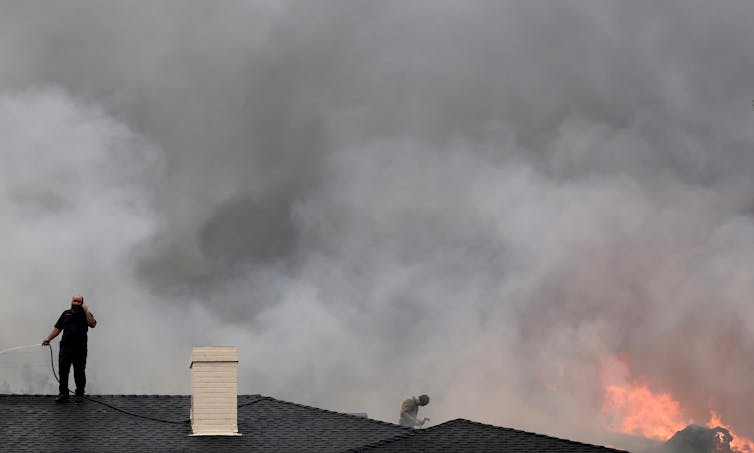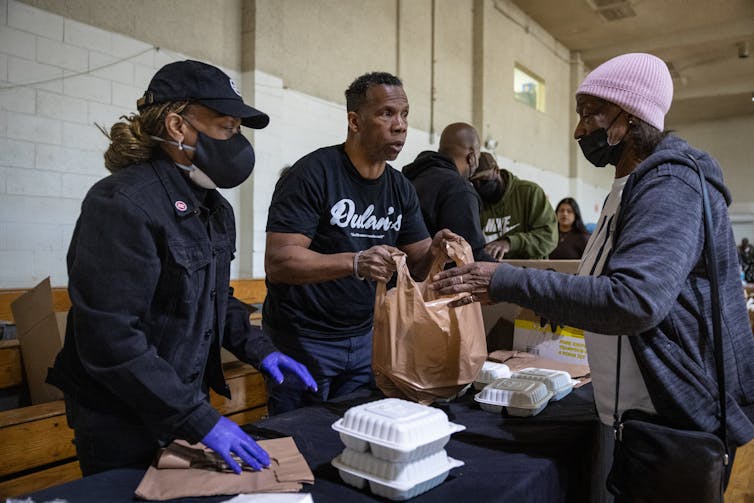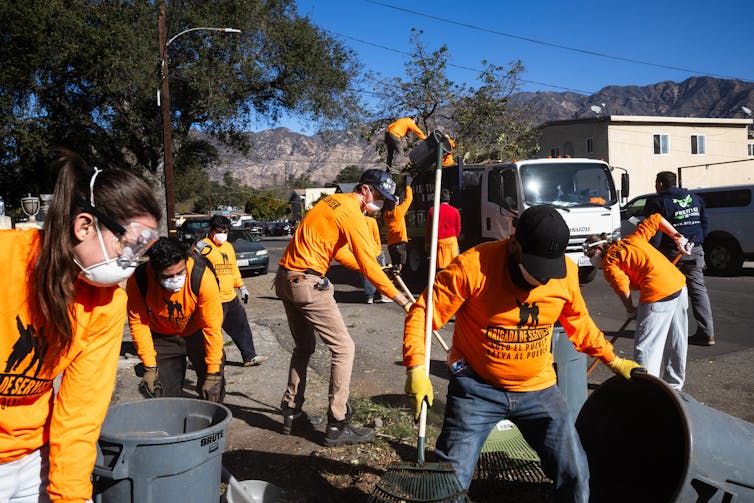In January 2025, as wildfires ravaged communities in suburban Los Angeles, stories of local residents helping neighbors and strangers began to circulate on social media.
Reports of Hollywood stars clearing streets to allow emergency vehicles to pass and to raise funds for fire victims went viral. But there are many other, less famous examples of people helping elderly neighbors to safety, even driving tow trucks to evacuate horses.
Businesses, including fitness centers, opened their facilities so evacuees could shower or charge their phones. Organizations that regularly work with the homeless quickly mobilized their members to help ensure that people living on the streets and in encampments could reach safety away from fires and hazardous air quality.
By definition, disasters overwhelm local resources, so civilian rescuers like this one are vital. Sixty years of research on the social aspects of disasters conducted by the University of Delaware's Disaster Research Center and others has repeatedly shown that effective disaster management requires the mobilization of community resources far beyond official channels.
Often responses are delivered through local groups that have been formed in response to a clear need in the community and share a common set of skills and interests. This is exactly what we are witnessing in Los Angeles.
The civilians who help often number in the thousands.
The number of people who step up to help during a disaster varies from event to event, but the numbers can be significant.
After the 1995 Oklahoma City bombing, more than 6,800 volunteers worked with the Red Cross in response efforts. That same year, volunteers responding to the earthquake in Kobe, Japan, recorded more than 1 million person-days of activity, measured as the number of people multiplied by the time they contributed.

In an in-depth study of the September 11, 2001, attacks on the World Trade Center, we interviewed local residents who used decommissioned fire boats to pump water for firefighters at Ground Zero. Tugboat, ferry and cruise ship operators in and around New York City responded immediately, quickly evacuating the area's 500,000 people from danger. In fact, most of the vessels involved belong to private companies. Other volunteers lined up evacuees and organized supplies and transportation to get people home.
More than 900 people, most of them acting in unofficial capacities, were awarded medals or ribbons for their efforts in the maritime response following the attacks on the World Trade Center.
A survey of residents after the 1985 Mexico City earthquake found that nearly 10 percent of local residents volunteered within the first three weeks of the response. A survey of residents in Santa Cruz and San Francisco counties after the 1989 Loma Prieta earthquake in California found that two-thirds of the public participated in response activities.

However, much of what local residents did during and after the disaster went unaccounted for in official reports.
There is no mechanism to quantify the extent to which a neighbor or complete stranger helps someone escape danger. However, research shows that when people are trapped and time is of the essence, family, friends and neighbors already on the scene are most likely to save lives. Often, ordinary citizens are also tasked with immediate tasks such as clearing debris. Providing a phone, a car, a place to do laundry or a little elbow grease can fill the void, allowing firefighters and other formal responders to focus on critical operations.
Get the right help where you need it
Every Center for Disaster Research study of large-scale disasters reveals some level of emergency, informal helping behavior.
A lack of public awareness of the large number of local residents already involved (often including the victims themselves) can lead to an influx of outsiders eager to help. Their arrival will actually create challenges for disaster relief efforts.
When too many people show up, or when people try to operate outside their area of expertise, they can put themselves and others at further risk. Communities are often in need of supplies, but unsolicited items of the wrong kind or at the wrong time can cause more problems than they solve.

So, what can you do to best support these local efforts?
Making a financial contribution to a trusted disaster relief agency or local organization can go a long way toward providing the support your community actually needs. Organizations like the American Red Cross or Feeding America, or local community groups that frequently work in the area are often best placed to provide help where it is most needed.
Long-term need for skilled help
Also, remember that the disaster does not end when the emergency is over. Survivors of Los Angeles-area fires will face a confusing and frustrating recovery task in the coming years.
Providing help after the immediate threat has passed — especially skilled help, such as construction experience or expertise in managing insurance and FEMA paperwork — is just as important.
For example, after fires in 1970 destroyed hundreds of homes in the San Diego area, local architects, engineers and contractors donated their time and skills to help people rebuild. Their work is coordinated by local architects and chamber members to ensure projects are assigned to reputable volunteers.
When we recognize the important ways neighbors and strangers help those around them, the wider community can support wildfire victims by providing the right help when recovery needs arise. Nearly every skill that is useful in calm times will be needed in the tough years ahead.